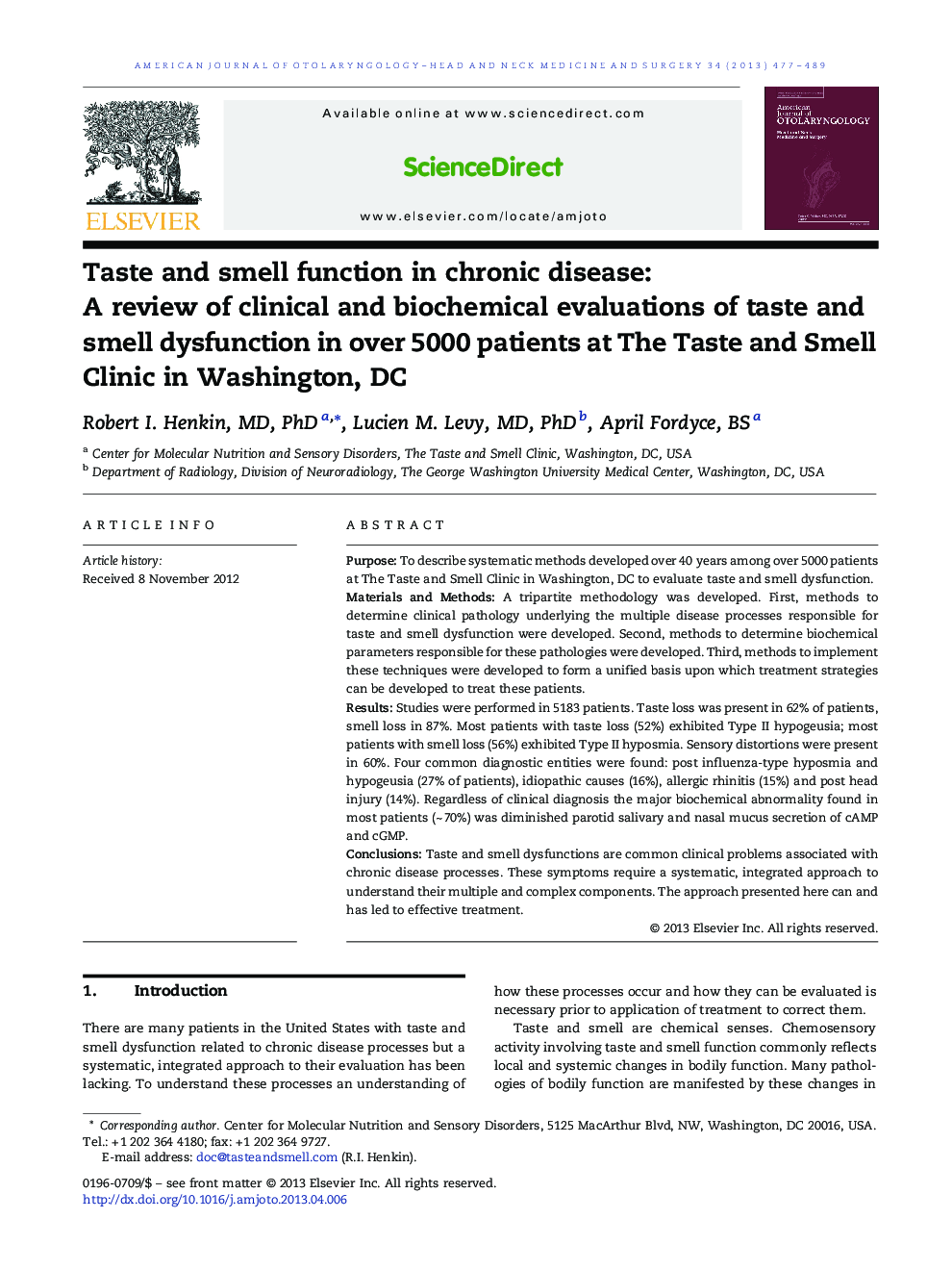| Article ID | Journal | Published Year | Pages | File Type |
|---|---|---|---|---|
| 4103142 | American Journal of Otolaryngology | 2013 | 13 Pages |
PurposeTo describe systematic methods developed over 40 years among over 5000 patients at The Taste and Smell Clinic in Washington, DC to evaluate taste and smell dysfunction.Materials and MethodsA tripartite methodology was developed. First, methods to determine clinical pathology underlying the multiple disease processes responsible for taste and smell dysfunction were developed. Second, methods to determine biochemical parameters responsible for these pathologies were developed. Third, methods to implement these techniques were developed to form a unified basis upon which treatment strategies can be developed to treat these patients.ResultsStudies were performed in 5183 patients. Taste loss was present in 62% of patients, smell loss in 87%. Most patients with taste loss (52%) exhibited Type II hypogeusia; most patients with smell loss (56%) exhibited Type II hyposmia. Sensory distortions were present in 60%. Four common diagnostic entities were found: post influenza-type hyposmia and hypogeusia (27% of patients), idiopathic causes (16%), allergic rhinitis (15%) and post head injury (14%). Regardless of clinical diagnosis the major biochemical abnormality found in most patients (~ 70%) was diminished parotid salivary and nasal mucus secretion of cAMP and cGMP.ConclusionsTaste and smell dysfunctions are common clinical problems associated with chronic disease processes. These symptoms require a systematic, integrated approach to understand their multiple and complex components. The approach presented here can and has led to effective treatment.
